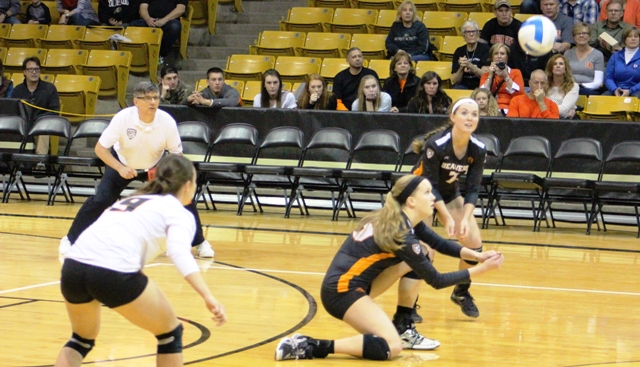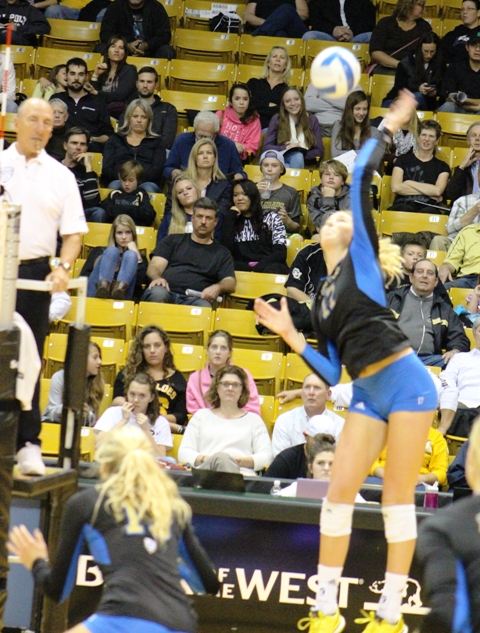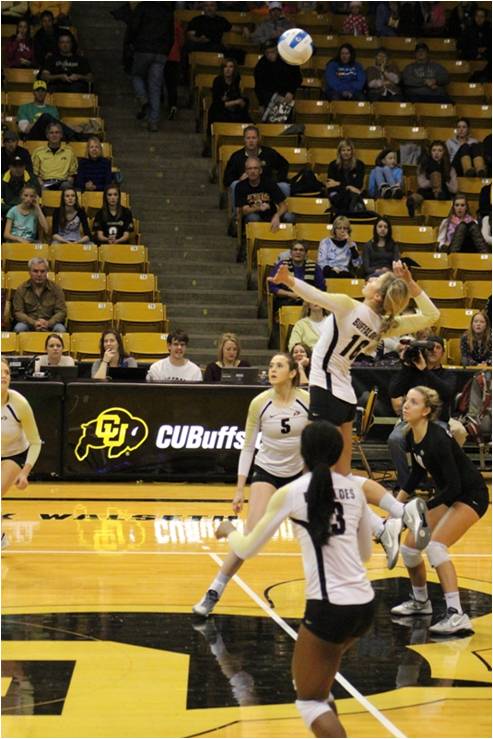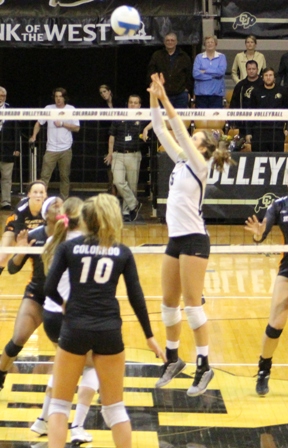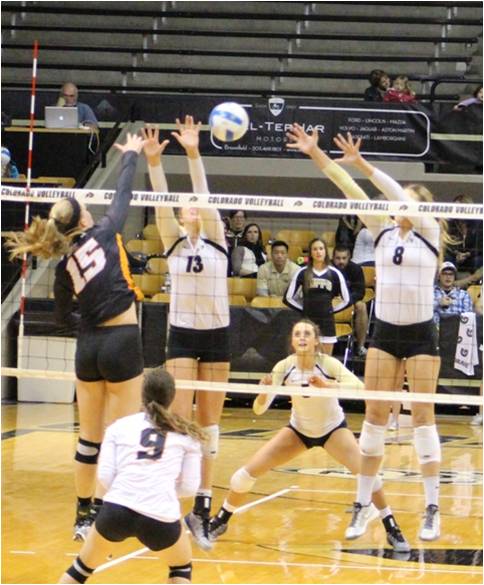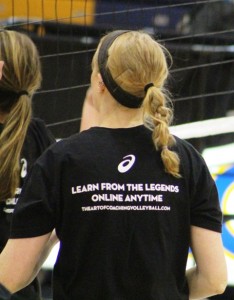Once again the women’s NCAA Volleyball Championships were a showdown between the Big Ten and the Pac-12. The Big Ten captured bragging rights for quality with six teams entered and three of the eight quarterfinalists. The Pac-12 laid claim to the deepest conference, with ten teams entered and one semifinalist.
On December 4th, 64 teams from 31 conferences kicked off regional play for the 34th NCAA women’s volleyball tournament. On December 20th, Penn State won the championship for the second consecutive year.
Each of the six Big Ten representatives won matches. The overall conference record was 17 wins and 5 losses.
|
|
Big Ten |
Won |
Lost |
|
|
Penn State |
6 |
0 |
|
|
Wisconsin |
3 |
1 |
|
|
Nebraska |
3 |
1 |
|
|
Ohio State |
2 |
1 |
|
|
Illinois |
2 |
1 |
|
|
Michigan St. |
1 |
1 |
|
|
Conference Total |
17 |
5 |
Each of the ten Pac 12 teams won matches. Conferences teams were 17-10 in championships.
|
|
Pac 12 |
Won |
Lost |
|
|
Stanford |
4 |
1 |
|
|
Oregon |
2 |
1 |
|
|
Oregon State |
2 |
1 |
|
|
UCLA |
2 |
1 |
|
|
Washington |
2 |
1 |
|
|
Arizona |
1 |
1 |
|
|
Arizona State |
1 |
1 |
|
|
Colorado |
1 |
1 |
|
|
USC |
1 |
1 |
|
|
Utah |
1 |
1 |
|
|
Conference Total |
17 |
10 |
The 16 teams from the Big Ten and Pac-12 conferences won 34 of the 63 matches played in the championships. That is dominance!
Five teams represented the SEC. Florida had three wins and was the only SEC team that had a strong presence in the championships. Texas @&M was the only team that did not win a match.
|
|
SEC |
Won |
Lost |
|
|
Florida |
3 |
1 |
|
|
Alabama |
1 |
1 |
|
|
Kentucky |
1 |
1 |
|
|
LSU |
1 |
1 |
|
|
Texas A&M |
0 |
1 |
|
|
Conference Total |
6 |
5 |
Four teams represented the ACC. North Carolina and Florida posted winning records.
|
|
ACC |
Won |
Lost |
|
|
North Carolina |
3 |
1 |
|
|
Florida |
2 |
1 |
|
|
Miami (FL) |
1 |
1 |
|
|
Duke |
0 |
1 |
|
|
Conference Total |
6 |
4 |
Four teams represented the West Coast Conference. The strongest WCC team was finalist BYU. The Cougars were the only team from the conference to win matches.
|
|
WCC |
Won |
Lost |
|
|
BYU |
5 |
1 |
|
|
Loyola Marymount |
0 |
1 |
|
|
San Diego |
0 |
1 |
|
|
Santa Clara |
0 |
1 |
|
|
Conference Total |
5 |
4 |
With the exception of Texas, the Big 12 was represented by teams that were weak by Big 12 standards.
|
|
Big 12 |
Won |
Lost |
|
|
Texas |
4 |
1 |
|
|
Iowa State |
1 |
1 |
|
|
Kansas |
0 |
1 |
|
|
Kansas State |
0 |
1 |
|
|
Oklahoma |
0 |
1 |
|
|
Conference Total |
5 |
5 |
Combined, the 19 teams from the SEC, ACC, WCC, and Big 12 won 22 matches of the 63 matches played.
There were 5 conferences that had the remaining 7 wins in the championships. CSU was the only team to have two wins.
|
|
School and Conference |
Won |
Lost |
|
|
Colorado State |
Mountain West |
2 |
1 |
|
|
Hawaii |
Big West |
1 |
1 |
|
|
Long Beach State |
Big West |
1 |
1 |
|
|
Dayton |
Atlantic 10 |
1 |
1 |
|
|
UALR |
Sunbelt |
1 |
1 |
|
|
Illinois State |
Missouri Valley |
1 |
1 |
|
|
Total |
|
7 |
6 |
|
|
|
|
|
|
|
In total, the 41 teams that represented the 11 conferences mentioned above had a combined record of 63-39.
Of the 41 teams representing the 11 conferences mentioned above only 9 teams did not win a match. In addition, there were 24 teams from 20 conferences represented that did not win a match.
Generally speaking, these teams were admitted to the tournament as a courtesy because they were conference champions. While these teams and conferences all have solid programs, they are not competitive with the top teams or conferences. This is evident by the first round match scores for the losers. The majority of first round losers lost their only match 3-0. The summary of first round match scores follows:
- 23 matches, 71.9%, were 3-0.
- 5 matches, 15.6%, were 3-1.
- 4 matches, 12.5%, were 3-2.
For the 31 other matches played (second round through the finals) the majority of the scores were 3-1, i.e. the matches were more competitive. A summary of these scores follows:
- 12 matches, 38.7%, were 3-0.
- 14 matches, 45.2%, were 3-1.
- 5 matches, 16.15%, were 3-2.
It is clear from the results that there are multiple tiers of ability within the NCAA Division I teams. The good news is that these 64 programs offer athletic opportunities for 600-700 of the country’s top women volleyball players.
Congratulations to Penn State on another NCAA volleyball championship!
